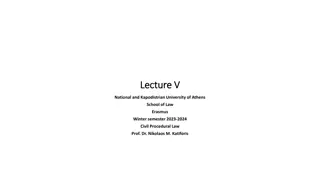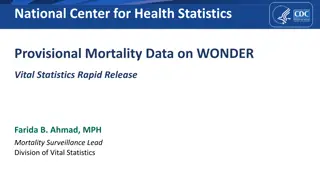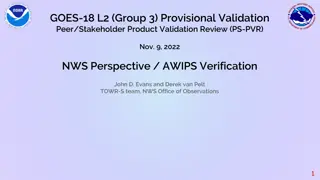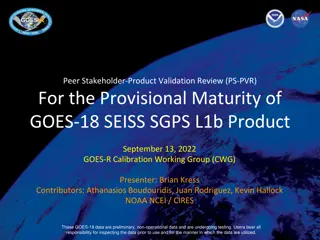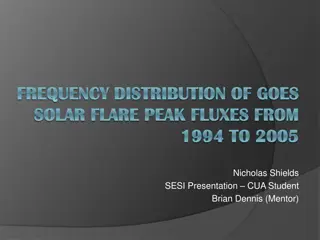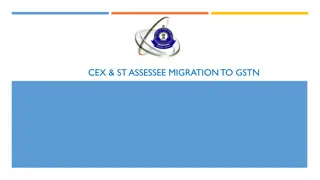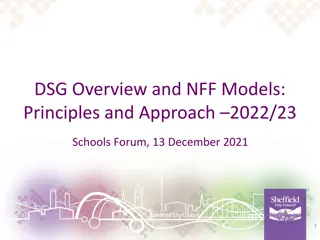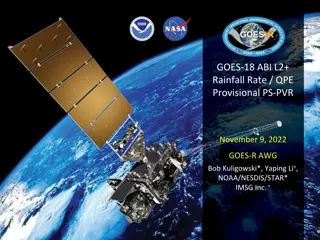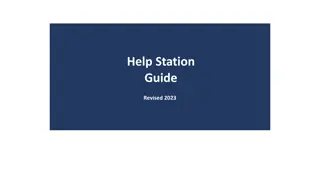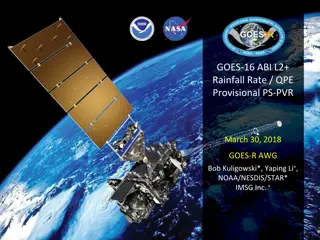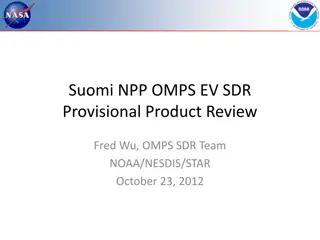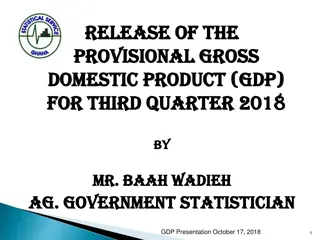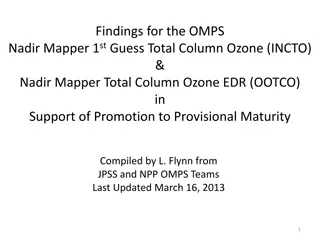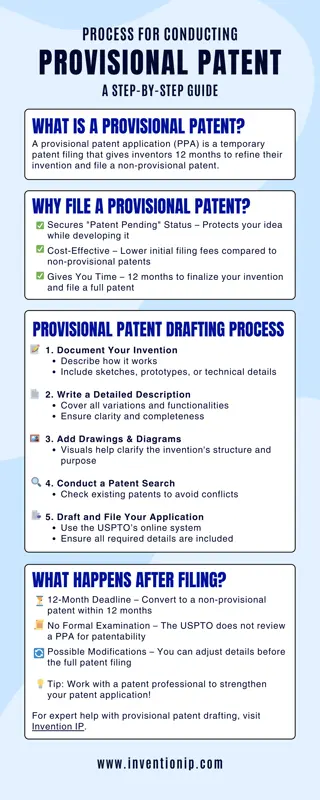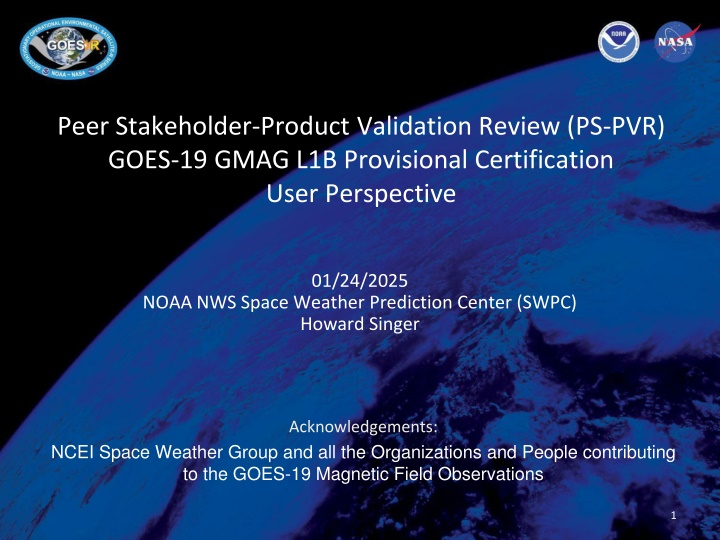
GOES Magnetometer Operational Uses for Space Weather Understanding
"Explore the essential role of GOES magnetometer data in space weather operations, from providing geomagnetic disturbance awareness to aiding in satellite operations and power grid management. Learn how the magnetometer impacts Earth and supports various applications in the space environment."
Download Presentation

Please find below an Image/Link to download the presentation.
The content on the website is provided AS IS for your information and personal use only. It may not be sold, licensed, or shared on other websites without obtaining consent from the author. If you encounter any issues during the download, it is possible that the publisher has removed the file from their server.
You are allowed to download the files provided on this website for personal or commercial use, subject to the condition that they are used lawfully. All files are the property of their respective owners.
The content on the website is provided AS IS for your information and personal use only. It may not be sold, licensed, or shared on other websites without obtaining consent from the author.
E N D
Presentation Transcript
Peer Stakeholder-Product Validation Review (PS-PVR) GOES-19 GMAG L1B Provisional Certification User Perspective 01/24/2025 NOAA NWS Space Weather Prediction Center (SWPC) Howard Singer Acknowledgements: NCEI Space Weather Group and all the Organizations and People contributing to the GOES-19 Magnetic Field Observations 1
Operational Uses of the GOES-R Series Magnetometer Data An Essential Measurement for Current and Future Space Weather Operations National Space Weather Action Plan identifies the geostationary magnetic field as one of the baseline observations required for space weather operations Space Weather Prediction Center Space Weather Forecast Office GOES Magnetometer and Particle Data GOES 11 Magnetometer Data Key to Understanding 8-month Galaxy 15 Outage 2
The GOES Magnetometer Measures all the Key Current Systems in the Magnetosphere That Influence Space Weather SOLAR WIND INDUCED ELECTRIC CURRENTS FLOWING IN THE MAGNETOSPHERE 3
Magnetometer Operational Use Summary Providing forecasters and the public with situational awareness of the level of geomagnetic disturbances Contributing to energetic particle products that use the orientation of the magnetic field for specifying the radiation belts and using in radiation belt models supporting satellite users Utilizing for real-time, operational validation of the Geospace model that supports power grid operations Detecting magnetopause crossings and alerts for the detection of solar wind shocks and sudden impulses at Earth Supporting sounding rocket launch decisions Conducting research for understanding the space environment and producing future products Developing techniques for new operational applications (e.g. wave-particle interactions needed by radiation belt models) Providing data to NESDIS NCEI archives and one of the most used data sets by the scientific community (through NCEI and NASA) 4
Magnetometer Measured Impacts at Earth Some Examples Solar Wind Shocks and Sudden Impulses When these impact Earth, large disturbances in Earth s magnetic field can cause geomagnetically induced currents (GICs) in power grids Forecasters use DSCOVR to give warnings, but GOES magnetometer shows impact at Earth and contributes to alerts Magnetopause Crossings Satellite operators have utilized GOES magnetometer data to understand when their satellite, normally in Earth s magnetosphere, is located in an extremely different plasma and field environment (e.g. affects on torquer coils) Storms and Substorms Forecasters use changes in the orientation of the geosynchronous observed magnetic field as an indication of the potential for the release of stored energy and subsequent injections of energetic particles that can cause spacecraft charging and particle precipitation into the auroral zone affecting HF radio wave propagation Satellite Anomalies GOES-11 magnetometer data were key to understanding the environmental conditions related to the 8-month outage of Galaxy 15 5
GOES-16 & -18 Operational Magnetometer Data During the Gannon G5 Geomagnetic Storm May 10-11, 2024 The geomagnetic storm that initiated on May 10, 2024 was observed by the GOES-16 and -18 magnetometers and signaled potential impacts on technological systems. 6
GMAG Performance Highlights and Recommendations GMAG (outboard and inboard) is performing extremely well, meeting key requirements GMAG is greatly improved from earlier instruments in the GOES-R series with respect to characteristics such as bias offset determination, noise level, lack of s/c, heater, and A/D converter noise/interference Consideration of sensor orthogonality to demonstrate agreement between GMAG 1 and 2 is excellent work GMAG is well-suited for use in the community and operations with the following considerations: SWPC supports transitioning of GMAG to Provisional status Additionally, SWPC recognizes the need for continued data stewardship and concurs with NCEI plans for: Continuing to pursue promising methods for arcjet corrections Bias stability monitoring Product use and development 7
SWPC is greatly appreciative of the work and contributions provided by NCEI, as well as the support provided by the NASA program and NASA GSFC, NOAA, LM and the entire GOES project. Contact : howard.singer@noaa.gov 8


